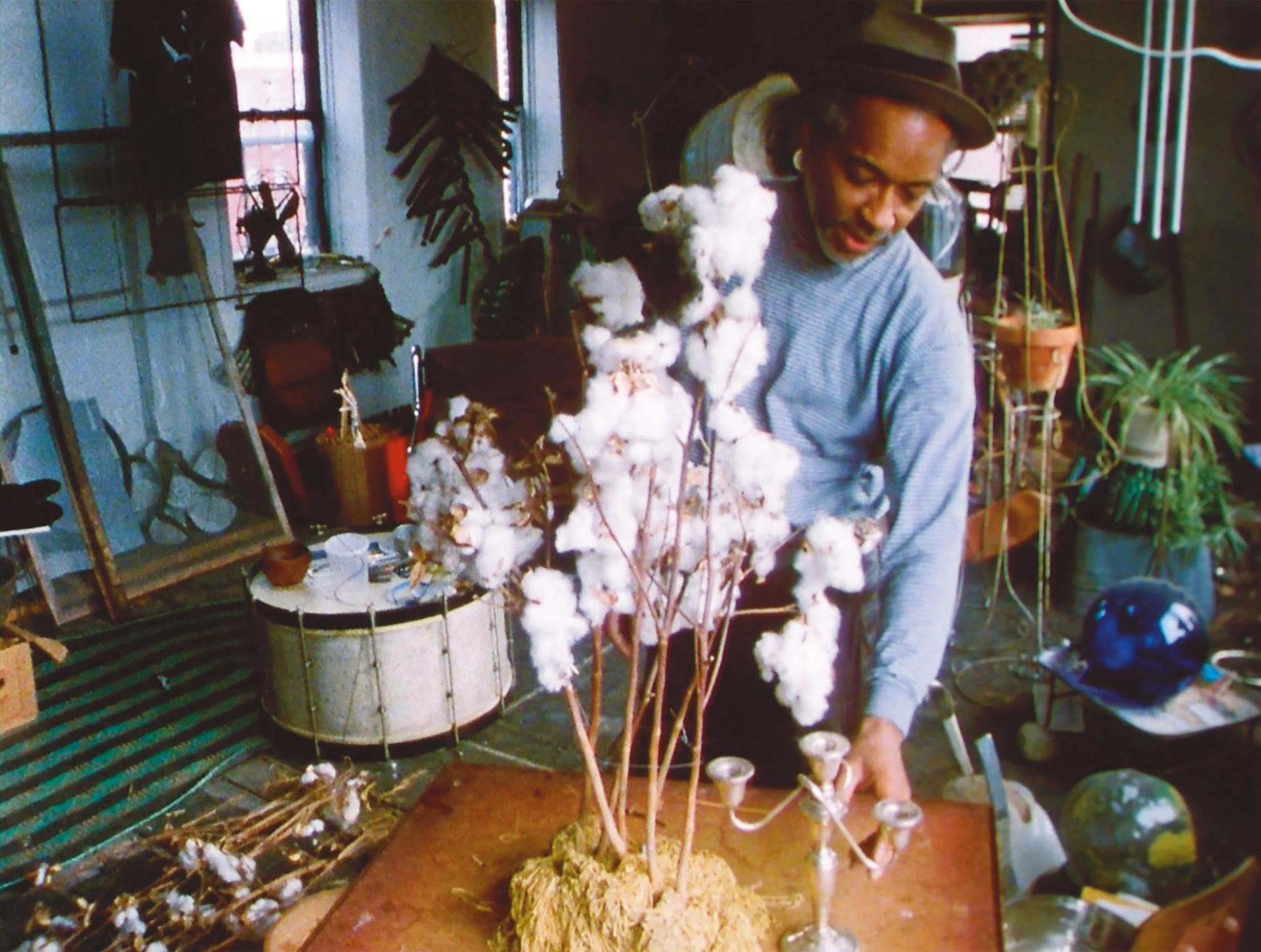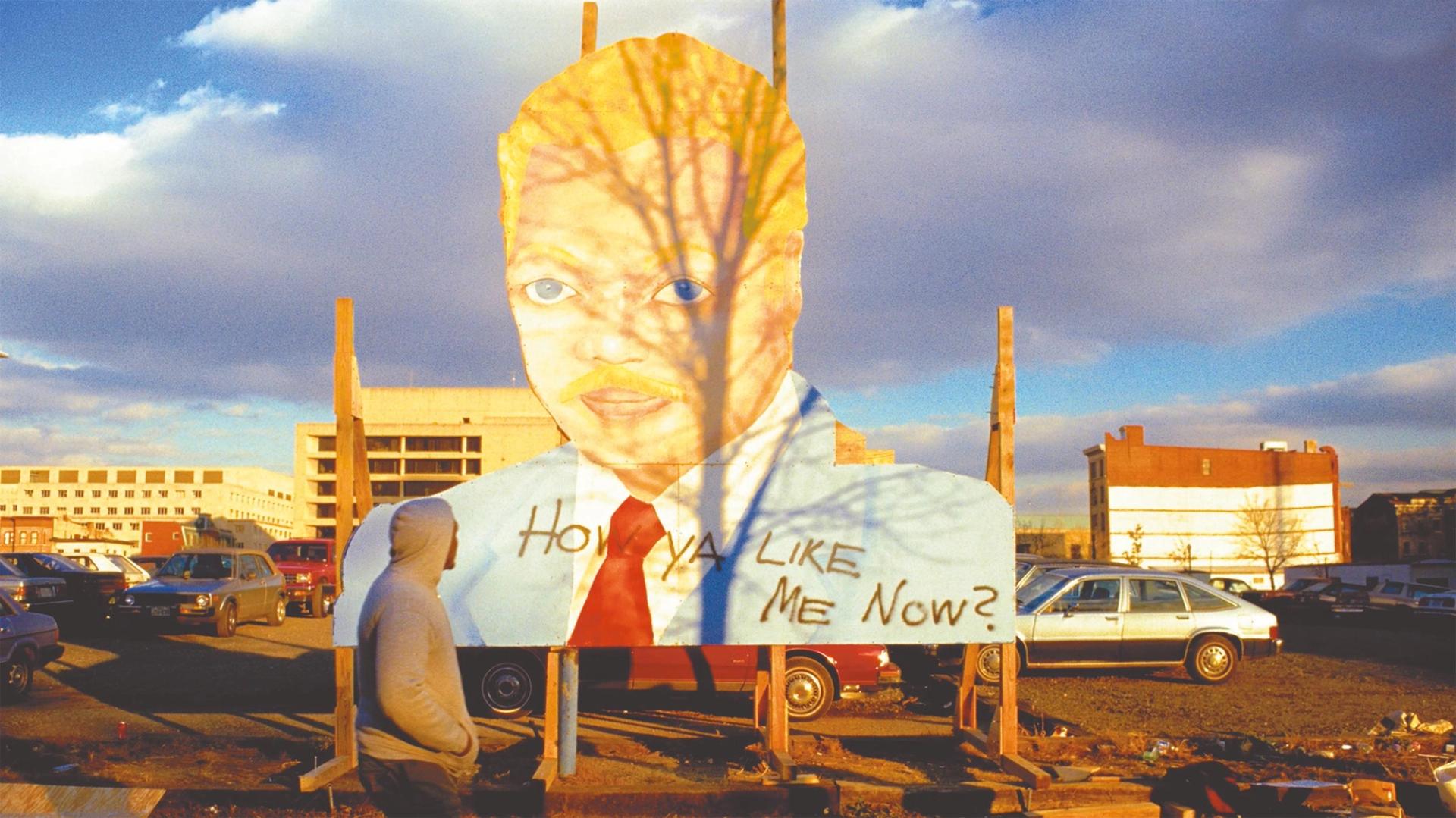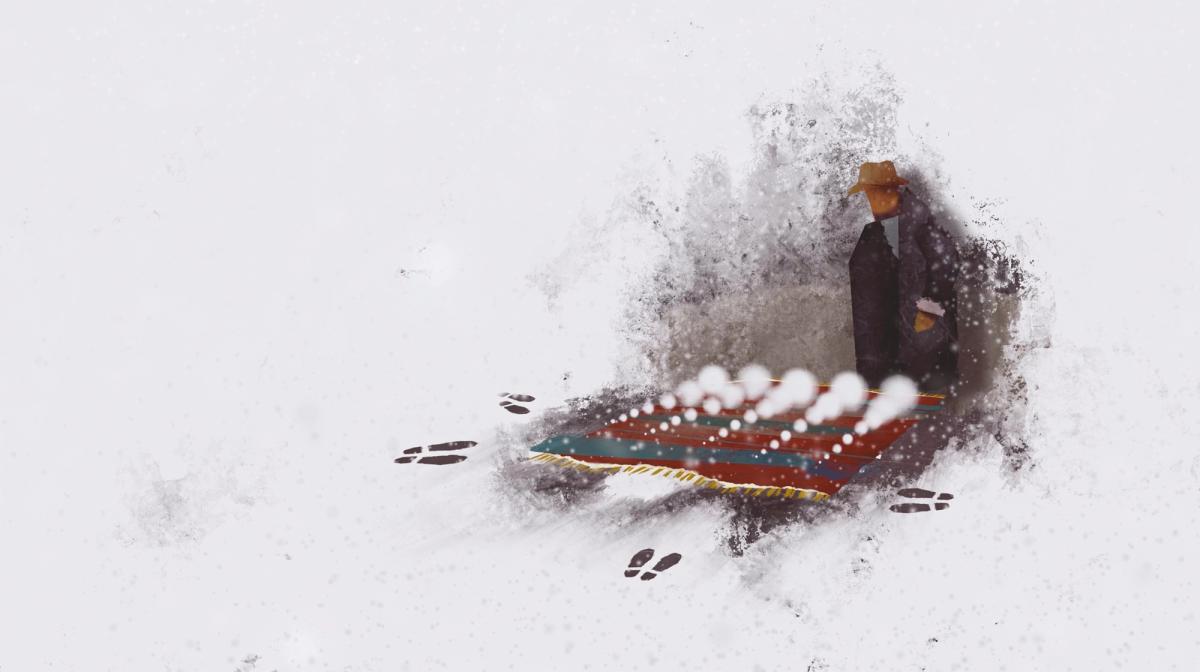David Hammons became a quiet legend for selling snowballs alongside homeless vendors on the streets of Manhattan in the 1980s—a wry comment on the Reagan-era art market that mostly ignored him. It has been rewarding Hammons for decades since.
In the 1970s, Hammons tapped into Surrealism and everyday materials in works—mostly sculpture—that drew from, and commented on, African American history. He has been an inspiration to several generations of Black artists. His work is in major museums, including the Tate in London, the Museum of Modern Art and the Whitney Museum of American Art in New York, and Los Angeles County Museum of Art. When his pieces become available, institutions vie to get them at prices that very few artists (and even fewer Black artists) have commanded. His snowballs are still in demand, if not in the same form.
But Hammons, who turns 80 next year, is rarely seen, and even more rarely heard. He avoids journalists and interviews. Calling him the art world’s Thomas Pynchon only raises his profile. The Melt Goes on Forever: The Art and Times of David Hammons, the first feature documentary on the elusive artist, has been showing at festivals this autumn and will be released widely next spring. Hammons, who was not interviewed for the film, probably will not be in the audience.

David Hammons in his Harlem Studio, 1981 Credit: Michael Blackwood
While the film-makers—the art market journalist (and The Art Newspaper contributor) Judd Tully and the documentarian Harold Crooks—do not meet Hammons, they do bring him and his times into closer focus via the finite amount of footage that they could scavenge, plus interviews with artists, critics and dealers (all of whom call him “David”, not “Hammons”). Eclectic and evocative, rather than critical, it is filled with glimpses of a witty, inventive imagination.
An early influence was Charles White, his former professor and the only African American teaching at Chouinard Art Institute (now the California Institute of Arts) at the time. Also formative for Hammons was the Los Angeles uprising in 1965, when much of the city’s Watts neighbourhood burned and 34 people were killed, many by police officers. Another influence was Marcel Duchamp, the French prankster and maker/finder of ordinary objects renamed and repurposed as works of art. Hammons seems out to put an edge on Duchamp’s gags—to be clever, but also to find conceptualism’s funk.
In a rare archival interview that is featured in The Melt Goes on Forever, Hammons was plain spoken. “In this culture you have to be a genius, I think, to learn their shit, practice their way of culture and then take their culture and yours and go beyond your culture and their culture to a new culture,” he said.
“Most people don’t have to go through that process,” he added. “They’re just born into a culture and they practice that culture and go to sleep at night. But we have to go through our culture, their culture and synthesise both of these to create another culture that brings something to both of these cultures.”
Creating a new language
The Melt Goes on Forever tracks Hammons’s path in that process. In Los Angeles, after the 1965 uprising, Noah Purifoy and younger artists like Hammons organised an exhibition of works created from the detritus gathered in ruined neighbourhoods that were seas of readymades. Arte povera, he explains in a video clip, was the closest term that the mainstream art world had for what he was doing.
For Hammons, that also involved his own body, making “body prints” by lying on paper sheets, quoting Yves Klein’s earlier blue forms. He made sculptures with his own hair and hair he collected at Los Angeles barber shops, attaching it to string, to rocks that resembled heads, to anything. Critics and others found a fleurs du mal magnetism in his signature work Untitled (Night Train) (1989), bottles of cheap wine collected on the streets and attached to each other in a graceful, translucent wheel.

Hammons appears in the film, in footage from 1993, eloquently responding to a critic of his work Courtesy of Williams College Museum of Art
Another object among many that Hammons would transform was the fur coat, slathered with paint or scorched, then exhibited and sold. It was his way of thumbing his nose at an art world and its mega-dealers that kept on coming, his friend Steve Cannon tells the film-makers.
In a revealing historical moment excavated for the film that makes you want to hear more, Hammons faces a student at Williams College in 1993, who calls his public sculpture Rock Fan (1993)—a huge stone on top of which he placed electric fans—“butt ugly”.
“Ugly is fear,” Hammons responds. “People are afraid of things that they’re not used to seeing. I’m interested in creating a new language, not to live under one that exists. We should look at more things that are non-symmetrical in this symmetrical world that we’re living in.”

Pale imitation: Hammons’s 1989 work How Ya Like Me Now? imagines the civil rights activist and politician Jesse Jackson as a white man with blonde hair Phillip Brookman
“The eyes can handle it,” he adds. “I don’t know if the mind can.”
On film, The Melt Goes on Forever is more of Hammons than we have seen before, and, unless he changes his mind, it could be the most we ever get.
• The Melt Goes on Forever: The Art and Times of David Hammons is currently screening at festivals in the US and Europe—see themeltfilm.com for times and locations


